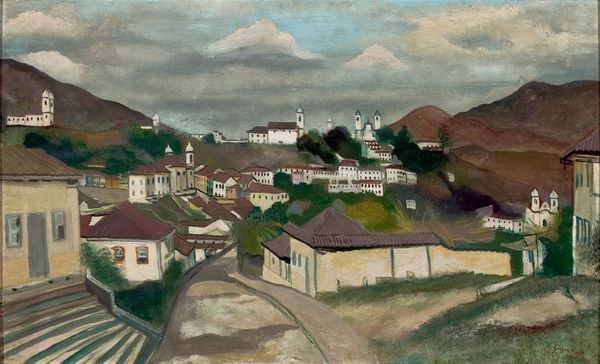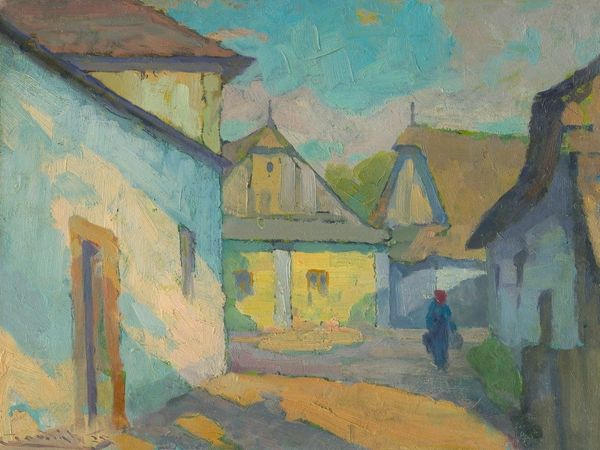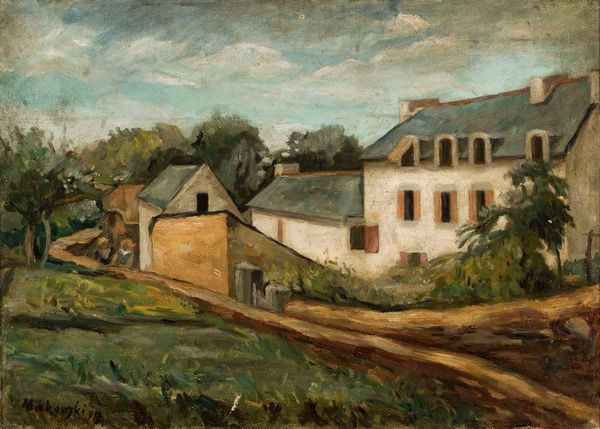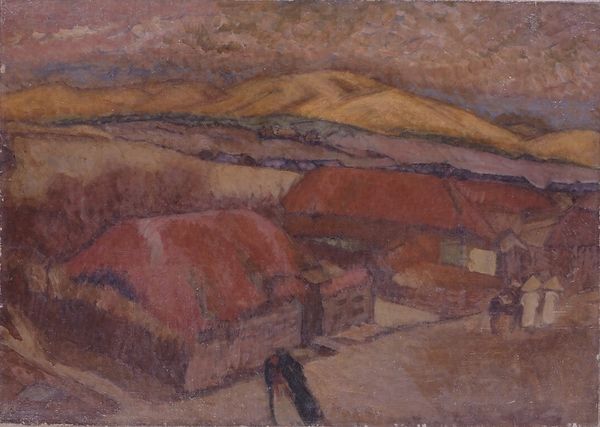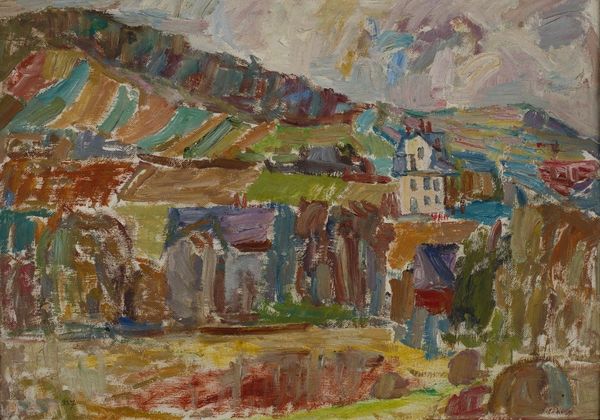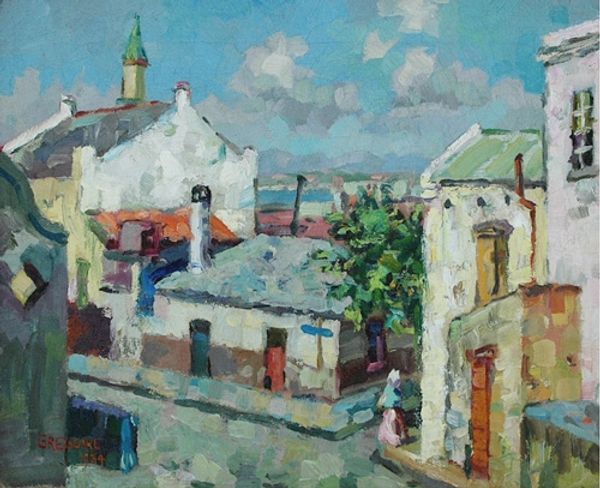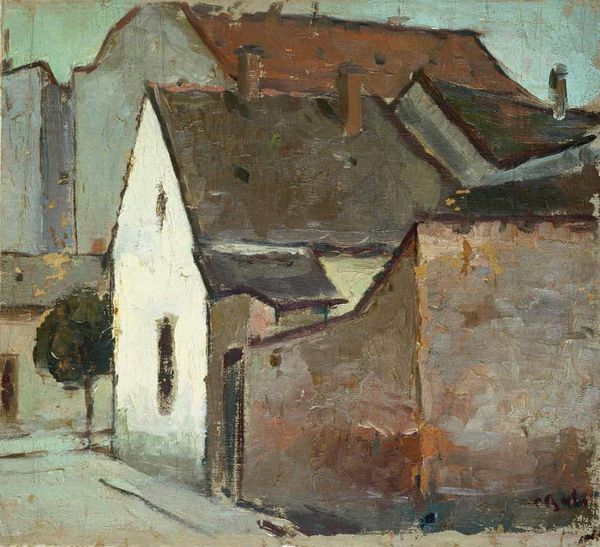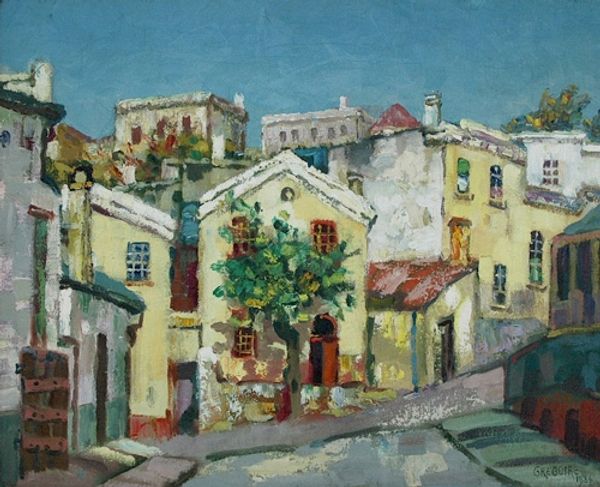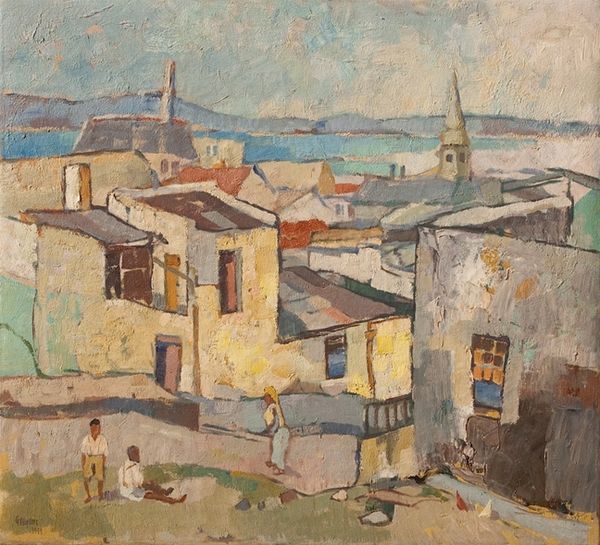
Copyright: Public Domain: Artvee
Curator: This is Edvard Munch's "Night in Nice," painted in 1891. He’s using oil on canvas here to capture the city. Editor: It’s a strikingly muted palette, isn’t it? Primarily blues and greys...it creates a very quiet, almost melancholic atmosphere. Those patches of red light stand out against the darkness. Curator: The subdued palette really draws attention to Munch’s technique. Notice the visible brushstrokes and the textured surfaces of the buildings. This impasto, where the paint is thickly applied, gives the scene a palpable, almost rough quality. This hints at the physical effort involved in its making, the very labor itself. Editor: The cityscape itself seems to symbolize more than just a physical location. It’s a nocturne, and night often symbolizes introspection, mystery, even the unknown. And look how those glowing windows punctuate the darkness. Are they symbols of hope or just simple domesticity? Curator: Given that Munch was a Symbolist, it would not surprise me at all. What interests me is that although the buildings suggest domestic spaces, they are somewhat uniform in their rendering. Almost as though to signify their existence as sites of both living and labor; buildings produced for function as well as the human aspect they symbolize. Editor: The hilltop skyline looms large in the composition. In many artistic traditions, mountains represent obstacles or journeys, but in this case it just serves to further isolate the settlement. Curator: The visible canvas and thick application speak to the active creation and modification of place that’s crucial to how society develops. Not only the artist’s touch, but that of the community over time as buildings come to serve certain purposes. It’s more than just a view, but also an actively constructed place in the history of the painting as much as it is that of the real Nice. Editor: Yes, and the painting retains the essence of a memory. This artwork uses an array of techniques and imagery to portray not just a scene, but an entire ethos of this place. Curator: Absolutely, a testament to how material and artistic creation converge and express a culture’s own narrative, to echo in memory.
Comments
No comments
Be the first to comment and join the conversation on the ultimate creative platform.
